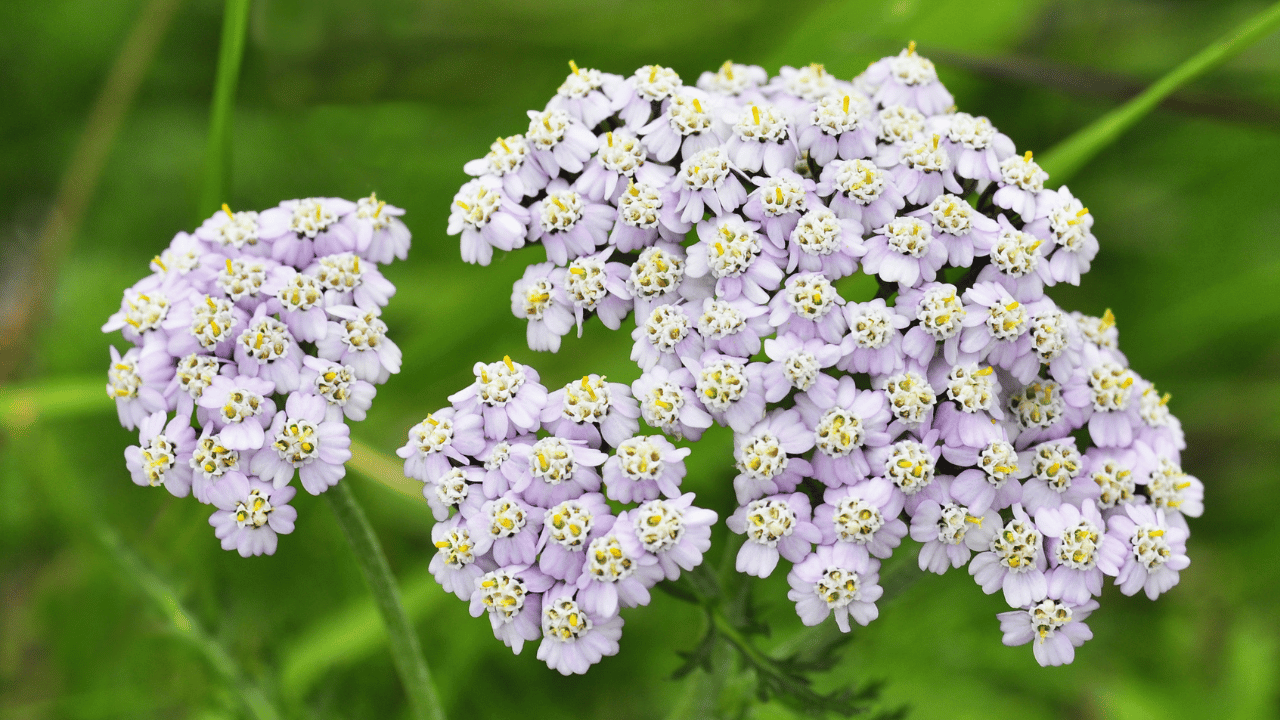Yarrow (Achillea millefolium) is a hardy, low-maintenance perennial that adds vibrant color and texture to any garden. While it’s fairly easy to grow, a few thoughtful adjustments can make all the difference in ensuring it thrives season after season. Whether you’re looking to boost its flowering potential or improve its resistance to pests, these ten tips will help you optimize your yarrow’s growth and beauty.
1. Plant in Well-Drained Soil
Yarrow prefers soil that drains well, as it’s prone to root rot in overly damp conditions. Loamy or sandy soil works best, though it can tolerate a range of soil types. You can amend heavy clay soil by incorporating sand or organic matter to improve drainage and aeration.
Once established, yarrow is drought-tolerant, but it’s important to keep an eye on the soil’s moisture content during its early growth stages. Waterlogged roots can stunt growth and reduce flowering, so ensure the soil remains consistently well-drained yet slightly moist.
2. Provide Full Sun Exposure
For the most abundant blooms, plant your yarrow in a location that receives full sunlight for at least 6-8 hours per day. While yarrow can survive in partial shade, it will grow leggy and produce fewer flowers when sunlight is limited.
When placing yarrow in your garden, avoid areas with prolonged afternoon shade. Intense sunlight encourages compact growth, stronger stems, and more vibrant blooms, which will make a noticeable difference in the plant’s overall health and appearance.
3. Water Sparingly
Yarrow thrives in dry conditions, so once it’s established, it only requires minimal watering. Overwatering can lead to weak growth and an increase in fungal diseases, so be mindful of moisture levels in the soil. During particularly dry spells, give the plant a deep soak, but allow the soil to dry out between watering.
Newly planted yarrow will need more frequent watering until its root system is fully developed. After that, you can reduce the frequency significantly, letting its natural drought-tolerance take over.
4. Deadhead Regularly
To encourage continuous blooming, make a habit of deadheading spent flowers throughout the growing season. This not only keeps the plant looking neat but also redirects its energy into producing new blossoms rather than seed formation.
When deadheading, use sharp, clean shears to cut the stems just above the foliage. This technique promotes healthier growth and often extends the bloom period well into late summer.
5. Fertilize Lightly
Yarrow is not a heavy feeder, so a single application of a balanced, slow-release fertilizer in the spring is typically sufficient. Over-fertilizing can cause rapid growth of leggy stems and reduce the plant’s resilience to drought.
If you prefer organic methods, compost or well-rotted manure can be mixed into the soil at the start of the growing season. This will provide a gentle, long-lasting nutrient boost without overwhelming the plant.
6. Control Pests Naturally
Yarrow is fairly pest-resistant, but aphids and other sap-sucking insects can occasionally be an issue. Introduce beneficial insects, such as ladybugs or lacewings, to control pest populations without resorting to chemicals.
Alternatively, you can make a simple insecticidal soap using water and a few drops of dish soap. Spray the affected areas lightly to reduce infestations without harming the beneficial organisms in your garden.
7. Divide Every Few Years
Yarrow benefits from regular division every 3-4 years. This keeps the plant vigorous and prevents overcrowding. Division also helps manage plant spread, as yarrow can become invasive in optimal conditions.
To divide yarrow, dig up the plant in early spring or fall, separating it into smaller clumps with a sharp spade. Replant the divisions in fresh soil, ensuring each new clump has healthy roots and shoots.
8. Prune for Shape and Airflow
Pruning yarrow back by about one-third in mid-summer will promote bushier growth and prevent the plant from becoming too tall and floppy. Regular pruning also improves airflow around the plant, reducing the likelihood of mildew or other fungal issues.
If your yarrow begins to lean or look sparse, a mid-season cutback can revitalize it. This also encourages a fresh round of blooms, especially if you prune after the initial flush of flowers fades.
9. Mulch Sparingly
While mulch can help suppress weeds and retain soil moisture, avoid over-mulching around yarrow. Excessive mulch can trap too much moisture, which yarrow doesn’t need and could even harm its roots. A light layer of mulch, around 1-2 inches, is usually enough to offer some protection without creating overly wet conditions.
In dry climates, a thin layer of mulch can help preserve soil moisture, but in areas with more rainfall, it’s better to skip the mulch entirely or use a very thin layer of organic material like shredded leaves or straw.
10. Protect from Heavy Winds
Yarrow’s tall stems, especially in taller varieties, can be prone to flopping or breaking in heavy winds. To prevent this, plant yarrow in a location with some natural wind protection, like near a fence or taller shrub.
If you don’t have a naturally protected spot, consider staking taller plants with garden twine and bamboo stakes to keep them upright. This extra support will ensure they don’t collapse under the weight of their blooms or in adverse weather conditions.

